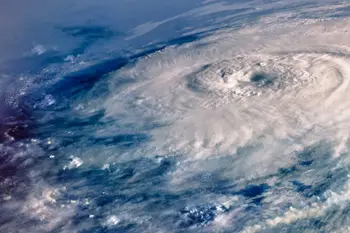When a hurricane is approaching, every minute counts. These powerful storms can bring heavy winds, flash flooding, and widespread power outages—sometimes with little warning. That’s why knowing how to prepare for a hurricane in advance is one of the smartest things you can do to protect your family and your home.
“These tips are best practices for all homeowners, but especially for those who live in hurricane zones like the Southeast,” said Mike Dawdy, director of state product management at Mercury Insurance. “By preparing your home for the upcoming storm season ahead of time, you can provide a safer environment for your family and save money if you sustain weather-related damage.”
Let’s walk through how to stay safe before and during a hurricane, so you’ll be ready when the next storm hits.
What to Do Before a Hurricane
Before hurricane season arrives, ensure you follow these hurricane safety tips:
Create a Hurricane Emergency Plan
Every household needs a clear, practiced emergency plan in place because you want everyone in your household to know what to do and where to go if a storm is approaching. According to the U.S. Department of Homeland Security, your plan should cover:
- Evacuation routes: Identify multiple ways out of your area. Know where you’ll go and how you’ll get there, whether it’s a friend’s home, a hotel, or a public shelter.
- Family communication strategy: Make sure all members know how to reconnect if separated. Designate an out-of-area contact for updates.
- Meeting locations: Choose both a local and distant meeting place in case of evacuation or disruption.
- Pet accommodations: Locate pet-friendly shelters in advance or make arrangements with family and friends. Don’t forget to keep a list of necessities for your pet in the case of an evacuation.
Stock a Hurricane Emergency Kit
FEMA recommends gathering supplies well before a storm is on the radar and storing them in an easy-to-carry container in case you need to evacuate quickly. Here’s what your kit should include at a minimum:
| Category | Items to Include |
| Water |
|
| Food |
|
| Lighting & Power |
|
| Health & First Aid |
|
| Tools & Equipment |
|
| Hygiene & Sanitation |
|
| Important Documents |
|
| Money & Communication |
|
| Extra Items |
|
Additionally, if you plan to replace your roof, consider opting for materials and installation methods that meet the IBHS Fortified Roof requirements. This standard provides enhanced protection against severe weather, helping to safeguard your home from a hurricane’s damaging effects.
Review Your Insurance Coverage
It’s easy to overlook the fine print in your insurance policy—until you need it. Here’s what you should do:
- Review your homeowners insurance: Understand what your homeowners insurance covers, especially wind and hail damage. Standard policies typically don’t cover flood damage.
- Purchase flood insurance: You can do this separately through the National Flood Insurance Program (NFIP) if you live in a high-risk area. There’s a 30-day waiting period, so plan ahead. For more information, check out our article on how to prepare your home for a flood.
- Create a home inventory: Take photos or a quick video walk-through of your belongings. This makes it much easier to file a claim if you ever need to.
- Review auto insurance coverage: Only comprehensive coverage protects your car from weather-related damage like fallen trees or flooding, so make sure you have it.
What to Do During a Hurricane
Once a hurricane warning is issued or conditions begin to deteriorate, your focus should shift from preparation to protection. Make sure to follow these tips so you know how to stay safe during a hurricane:
Stay Informed and Monitor Alerts
Even after a storm makes landfall, conditions can change rapidly, so it’s important to stay connected to reliable updates.
- Keep your phone charged and turn on local emergency alerts or weather apps for real-time updates.
- Use a battery-powered or hand-crank radio (ideally a NOAA Weather Radio) in case the power goes out or cell service drops.
- Pay close attention to official announcements about flooding, evacuations, tornado warnings, and when it’s safe to come out of shelter.
Follow Your Emergency Plan
This is the moment your plan was made for, and now’s the time to follow it.
If officials tell you to evacuate, don’t wait. Leave right away and use marked evacuation routes. Never drive through floodwater because it only takes a foot of water to sweep a car away.
If you’re sheltering in place, make sure everyone knows where to go and what to do. Stick together, especially if you have kids, pets, or older family members. It’s also a good idea to let a friend or relative outside the storm zone know where you are and that you’re safe.
Shelter in Place Safely
If you’re riding out the storm at home, choose your safest spot and stay put until you’re told it’s safe to leave. Here are some tips to keep in mind:
- Stay indoors and away from windows, skylights, and glass doors since flying debris can shatter glass and cause injuries.
- Shelter in a small, windowless room on the lowest level of your home that’s not prone to flooding. A hallway, closet, or bathroom is usually a good choice.
- Have your emergency kit, radio, flashlight, and phone nearby.
- Avoid using candles due to fire risk; use battery-powered lights instead.
- Unplug electronics to protect them from power surges.
- If water starts rising inside your home, move to higher ground. Don’t go into the attic unless you have a way to escape through the roof.
Watch for Tornadoes and Secondary Hazards
Hurricanes can bring other dangers besides high winds and heavy rain. Here’s what you need to know:
- Tornadoes are common in the outer bands of hurricanes. If a tornado warning is issued, move to a small, windowless interior room on the lowest floor.
- Carbon monoxide poisoning is a serious risk if you’re using a generator. Always run generators outside, far from windows and doors.
- Avoid downed power lines, even if they appear inactive. Report them to authorities and stay at least 30 feet away.
- Watch for sewage backups, contaminated water, and mold if flooding happens in your home.
Hurricane Preparation Checklist
Need a recap? This checklist pulls together all the key steps to help you prepare for a hurricane.
| Task | Details |
| Create a hurricane emergency plan |
Plan evacuation routes, choose meeting spots, and share contact info with all household members. Don’t forget pets. |
| Sign up for for emergency alerts |
Enable local weather alerts on your phone or sign up through your city/county website. |
| Assemble a hurricane emergency kits |
Include water, food, first aid, flashlight, batteries, important documents, medications, cash, and hygiene items. |
| Prepare your home |
Board up windows, secure outdoor items, trim trees, and inspect your roof. |
| Check your insurance coverage |
Review homeowners and auto policies, and consider flood insurance if needed. |
| Document your belongings |
Take photos or videos of your home and valuables for insurance purposes. |
| Fuel up your vehicle and generator |
Keep gas tanks full in case of evacuation or power outage. |
| Charge devices and back up files |
Fully charge phones, battery packs, and back up important files digitally. |
| Identify a shelter spot |
Choose a small, windowless room on the lowest level that won’t flood. |
| Stay informed during the storm |
Use a battery-powered or hand-crank NOAA radio for official updates. |
| Follow your emergency plan |
Evacuate if ordered, or shelter in place safely if staying home. |
| Watch for tornadoes and other risks |
Be alert for tornado warnings and stay clear of downed power lines and floodwater. |
Conclusion
These hurricane safety tips can help you keep your family and property safe when disaster strikes. It’s also important to get the right home insurance before the hurricane to help keep your most valuable asset protected. If you’re looking for cheap home insurance, Mercury offers reliable coverage at an affordable rate.
Contact us today for a fast, free quote!


